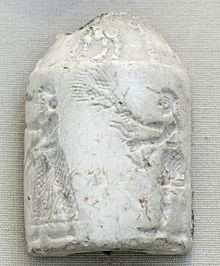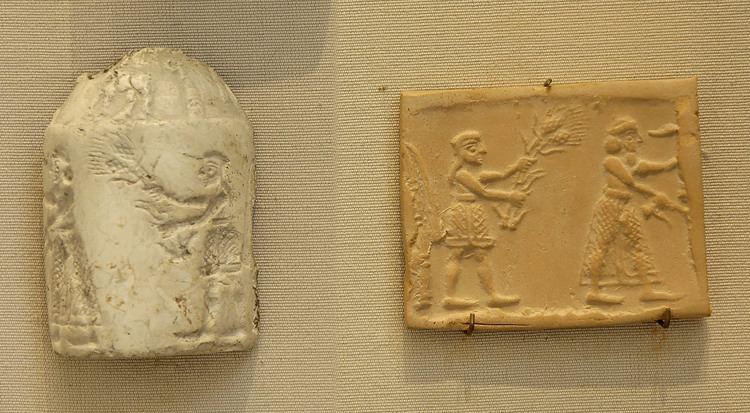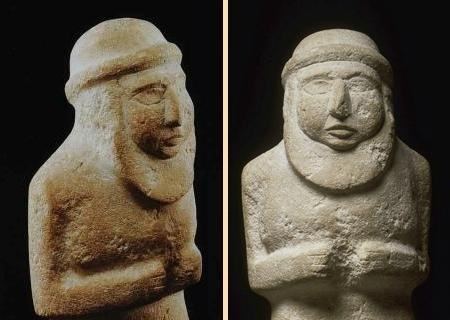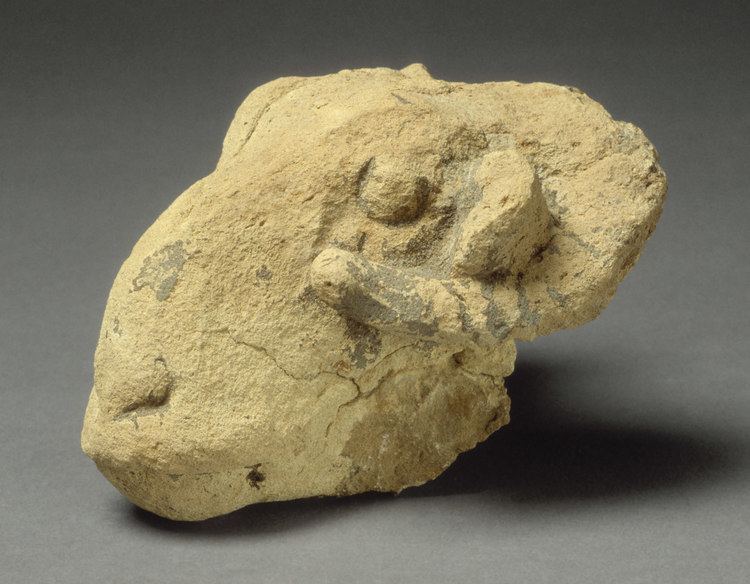Dates c. 4000–3100 BC | Period Copper Age Type site Uruk | |
Uruk period technology
The Uruk period (ca. 4000 to 3100 BC) existed from the protohistoric Chalcolithic to Early Bronze Age period in the history of Mesopotamia, following the Ubaid period and succeeded by the Jemdet Nasr period. Named after the Sumerian city of Uruk, this period saw the emergence of urban life in Mesopotamia. It was followed by the Sumerian civilization. The late Uruk period (34th to 32nd centuries) saw the gradual emergence of the cuneiform script and corresponds to the Early Bronze Age; it may also be called the Protoliterate period. It was during this period that pottery painting declined as copper started to become popular, along with cylinder seals.
Contents
- Uruk period technology
- History of research
- Dating and periodization
- Uruk expansion
- Early city states
- End of the Uruk period
- References

History of research

The term Uruk period was coined at a conference in Baghdad in 1930, where at the same time the Jemdet Nasr and Ubaid periods were defined.
Dating and periodization

Periodization is after archaeological layers at Uruk. Thus, Uruk XVIII–XIV are not part of the "Uruk period" proper but are comprised by the Ubaid period. The Uruk period proper corresponds to the layers Uruk XIV–IV, with the late phase Uruk IV lasting ca. 3300–3100 BC. Uruk III reaches up to 3000 BC and into the Early Dynastic period . [source needed]
Uruk expansion

Around 3600 BC, during the Middle Uruk period, Uruk trade networks started to expand to other parts of Mesopotamia, and as far as North Caucasus. According to archaeologist Konstantine Pitskhelauri, this expansion started even earlier, at the end of the 5th millennium BC, and continued in the 4th millennium.
Large masses of Uruk migrants settled in the South, and later in the North Caucasus. The sites in this general area include Habuba Kabira in Syria, and Arslantepe in Turkey. Uruk expansion to the northeast included sites like Godin Tepe in Iran. Tepe Gawra, in northwest Iraq, is another important site with deep stratigraphy that includes the Uruk period in later layers. Hamoukar is a large site in northeastern Syria that has been recently excavated; it includes Uruk and pre-Uruk layers.
Uruk enclaves have also been identified at Tell Brak and Nineveh in northern Mesopotamia, and on the Syrian Euphrates at Qrayya, and Jebel Aruda. On the Euphrates in Anatolia, Uruk enclaves were found at Hassek Hoyuk, Samsat, and Tepecik (Elazığ Province, near Keban Dam).
Early city-states
These early city-states had strong signs of government organization (though social stratification was not strongly evident until very late in this period and the beginning of the Early Dynastic Period, beginning around 3100 BC), evident even in items such as cheap, mass-produced beveled rim bowls which were made to be discarded. These bowls may have been handed out at community outings, such as large-scale constructions. The cities grew to cover up to 250 acres (1 km²) and supported up to 10,000–20,000 people by the end of the period.
End of the Uruk period
A few commentators have associated the end of the Uruk period with the climate changes linked to the Piora Oscillation, an abrupt cold and wet period in the climate history of the Holocene Epoch, another explanation given is the arrival of the East Semitic tribes represented by the Kish civilization.
